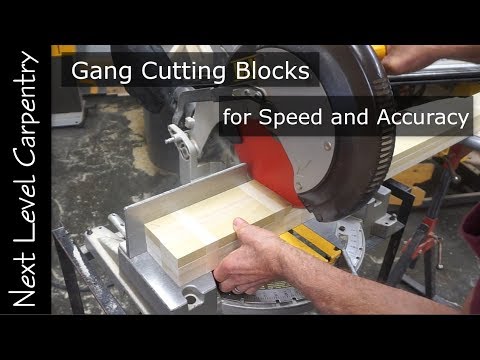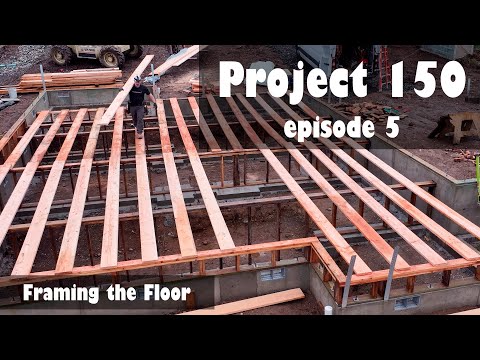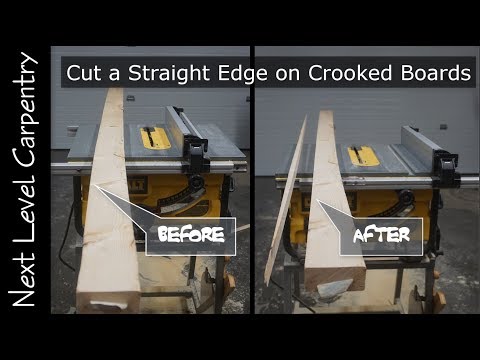Tim Uhler of Awesome Framers demonstrates how to cut common rafters single-handedly in a production setup using a chainsaw, a beam-cutting saw, and a regular worm-drive Skilsaw. He is quick to point out that he learned this stuff from Will Holladay
Step-by-step production rafter cutting
Build two i-joist 'sawhorses.'
Stack the rafters crown side down. This puts the interior side facing up. If the rafter surfaces are erratic, and the interior side of the rafters will have drywall, you can shim the rafters flush. If the interior is attic space, there is no need.
Brace the rafters together with blocks of lumber toenailed into the i-joists
Cut the first rafter and stack it along with the rest. Mark the seat cut, plumb cut, and rafter tails. Scribe a line to connect the marks across all rafters.
To cut the plumb cut, Tim recommends using a (sharp) chisel-tooth chain and the Headcutter from Big Foot Tools (www.bigfootsaws.com).
Tim cuts across the stack pushing using the top of the bar for a couple of reasons:
- Directs tie dust downward
- Helps to keep the saw flat. Cutting in the opposite direction would make the saw climb out of the cut, which ruins accuracy.
Chainsaw kickback is caused by binding the blade, usually at the nose
According to Tim, for a kickback to occur, one of two things must happen: the nose of the bar needs to hit something, or the bar must bind in the wood."
Factcheck: True.
There are some other things that can contribute to chainsaw kickback, like really loose chains that are really dull. McCulloch says kickback is usually caused "when the chain gets snagged," usually in the kickback zone - the top corner of the nose. Neither of these is the case in Tim's video, and the saw slides through the 2x12s like butter.
Use a beam cutter for the rafter tail cuts
Mark straightedge points on the rafter tail. Make sure to place the straightedge on the side of the rafter that doesn't fall off.
Attach the straight edge, and cut. Tim switches to the bottom of the bar here because:
More sawdust makes better video- The saw will climb out of the cut if running it through top-first in this direction.
For the rafter seat cut:
He uses a Bigfoot 10-1/4 inch beam saw with a swing table. The saw pulls a LOT of power, so use a pfaat extension cord.
The bevel is 63.5 degrees in this case. Sometimes you may need to cut at half the saw depth and then the full depth if the saw has difficulty. Use a sharp blade.
The rafters Tim is cutting require rips to the tails, so each one must be cut individually to that extent. For simple rafter tails, the roof would be cut now.
PRO Tip: cut frieze blocks the same way
Tim cuts another gang of rafters that will have no tails because they sit in joist hangers.
He orders the rafters the same length, though so that he can cut 22-7/16 inch frieze blocks before making the tail cuts.
Yeah, but... gang-cutting rafters is dumb because ...
From Tim's YouTube post:
The two most common knee jerk responses to this are:
1) Chainsaws aren't accurate enough. This is totally false. My rebuttal is to cut a batch of rafters 1 at a time and then rack them and notice the differences. See 10:23 and 10:44 for visual proof.
2) It takes longer to set up than to just cut 1 at a time. "False"-Dwight Shrute
As you can see, the rafters only get handled to rack them, and even cutting the tails and stacking them off to the side is faster than handling a pattern and marking that pattern times the number of rafters. The more rafters you need to cut, the more time is saved.
Production comes from an economy of movement and sometimes the speed of movement.
Oh yeah, and he cut the entire roof, rips and all, in one hour.











